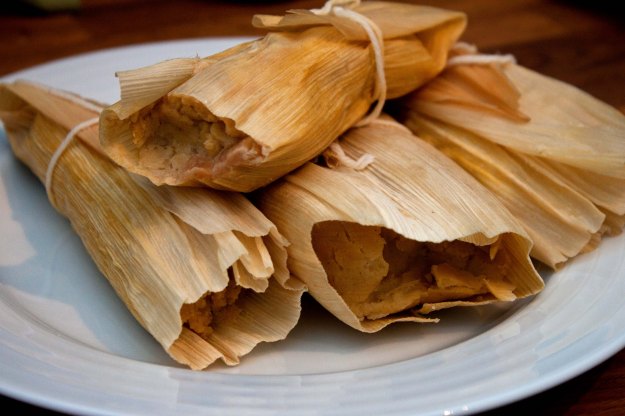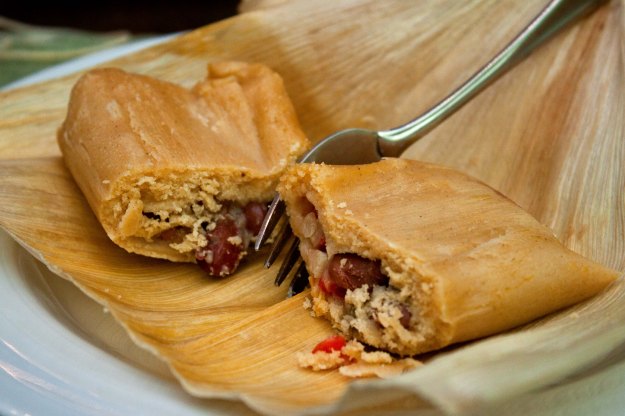Sigh. Christmas? It’s March. I know. And I don’t really have any excuses either! I guess I just fell out of the habit and it’s been hard to get things started again.
So I’m going to make a goal of at least one weekly post. Here is what I’ve been meaning to write about since Christmas!
Are you a holiday traditionalist, or do you like to mix things up? We definitely fall into the latter group. We hosted Christmas dinner this year for the first time in our new house, and we spent weeks thinking about what we would make. Then the New York Times had an article just in the nick of time which gave us our inspiration.
We’ve made tamales many times before, but it never occurred to me to make them for Christmas. I didn’t know they were the traditional Christmas meal in Mexico! They are labor-intensive, but then you’ve got a perfect, healthy and portable meal for weeks! They freeze easily and can be tossed right in your lunch bag. They’re also great for camping.
In the past we’ve used Alton Brown’s dough recipe/assembly, but this time we adapted the one in the NYT.
I think the pork filling is more traditional, but here is my veggie version. We made both kinds. Approved by my Mexican neighbor :).
Tamales
For the dough:
- 1 cup shortening
- 4 cups dry masa
- 1 tablespoon baking powder
- 2 teaspoons kosher salt
- 3 1/2 to 4 cups warm stock
For the filling:
- 1 medium-large pepper
- 1 medium-large onion
- 1-2 cloves garlic
- teaspoon chile powder
- 1 can beans (or two cups cooked beans)
- About a half cup shredded cheese
- Salt, pepper to taste
Assembly:
- Package of corn husks
- A very large stock pot
- Steamer rack
Method
Heat enough water to cover the corn husks in a large bowl. They will float so devise a way to keep them covered — usually something heavy like a larger bowl or dish on top will work.
Pour simmering water over husks and let soak for 30-60 minutes.
For the filling…
Saute some finely chopped garlic, a pepper and an onion with some chile powder, salt, pepper etc. Add some beans — about a can or two cups worth. We used pinto beans this time but black beans are great too. Heat the beans through, adding some water or stock by the tablespoon if the mixture gets too dry.
Toss in a bowl and mash up coarsely with a fork or potato masher or whatever. You can also use a food processor if you want it to be more of a paste. Allow to cool to room temperature and mix in some shredded cheese if you want. While it is cooling, mix the dough.
The dough
Use an electric mixer to cream the shortening, and then slowly add the dry ingredients. Add the stock a cup at a time until the dough is soft and pliable, but not too wet. You can also do this step by hand but it’s a little more laborious.
Assembly
Spread a layer of dough about a 1/4 inch thick on each husk, leaving a little space on the top, the edges, and more space at the bottom. I find this easiest to do by hand. How much filling you put in each tamale depends on the size of the husk — they can vary widely — but definitely avoid over-filling and err on the side of too little. Ease the dough away from the husk and bring together over the filling in the center. This video has a demonstration starting around minute 13: http://www.youtube.com/watch?v=GCrn5zlGjig
Wrap the husk around the tamale, fold over the bottom and tie with a string.
Steam all of the tamales for about an hour, until they release easily from the husk.
Serve with salsa, guacamole, cheese, etc.
Enjoy for many meals to come!
-R

















